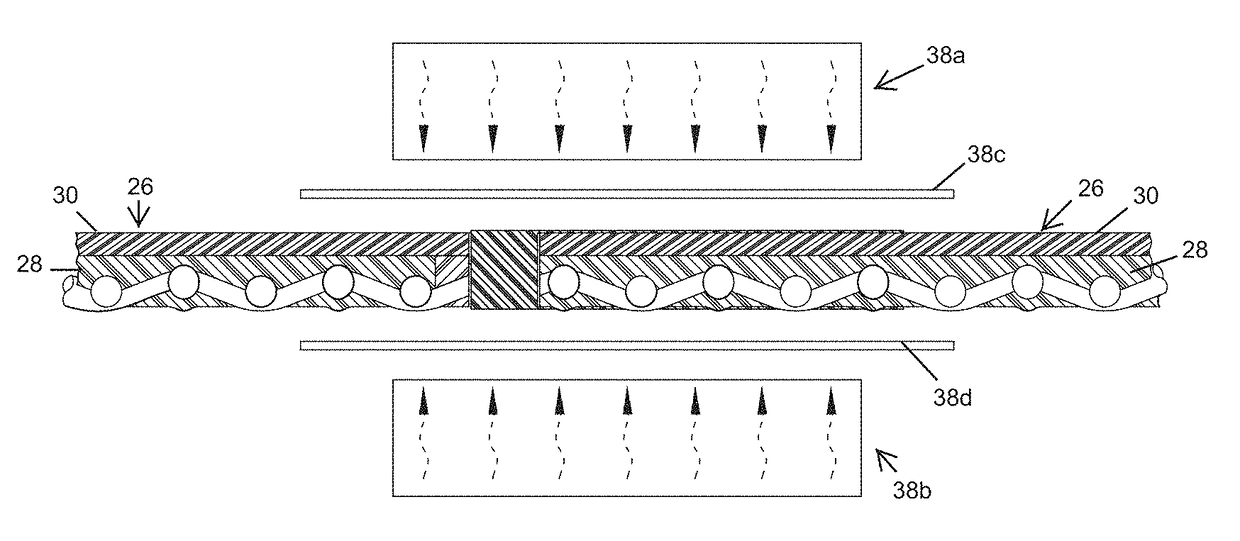Seamless end connection for conveyor belts
a conveyor belt and end connection technology, applied in the direction of transportation and packaging, mechanical equipment, other domestic objects, etc., can solve the problems of inability to splice or attach single fabric belts, difficulty in spicing and forming end connections without mechanical fasteners, and inability to assemble connectors
- Summary
- Abstract
- Description
- Claims
- Application Information
AI Technical Summary
Benefits of technology
Problems solved by technology
Method used
Image
Examples
Embodiment Construction
[0037]Referring now to the drawings and the illustrative embodiments depicted therein, an end connection 10 for a conveyor belt 12 can be formed in accordance with the present invention to form an endless loop or otherwise attach the conveyor belt to another section of belting. The end connection 10 for the conveyor belt 12 generally includes a thermoplastic connector 14 or joining material, such as a thermoplastic copolyester elastomer or like material that thermally engages between the opposing end portions 16 of the conveyor belt 12. The end portions 16 of the belting may include a splice formation or configuration, such as a finger splice formation 18, 118, 218 (FIGS. 1-12B) or a step formation 318 (FIGS. 13A-C) or the like. The finger splice formation 18 is cut or formed to provide cut edges 20 that may be generally perpendicular to an upper surface of the conveyor belt 12 and expose the fabric carcass 22 of the conveyor belt 12. Upon heating the end portions 16 to thermally en...
PUM
| Property | Measurement | Unit |
|---|---|---|
| melting points | aaaaa | aaaaa |
| melting points | aaaaa | aaaaa |
| melting points | aaaaa | aaaaa |
Abstract
Description
Claims
Application Information
 Login to View More
Login to View More - R&D
- Intellectual Property
- Life Sciences
- Materials
- Tech Scout
- Unparalleled Data Quality
- Higher Quality Content
- 60% Fewer Hallucinations
Browse by: Latest US Patents, China's latest patents, Technical Efficacy Thesaurus, Application Domain, Technology Topic, Popular Technical Reports.
© 2025 PatSnap. All rights reserved.Legal|Privacy policy|Modern Slavery Act Transparency Statement|Sitemap|About US| Contact US: help@patsnap.com



